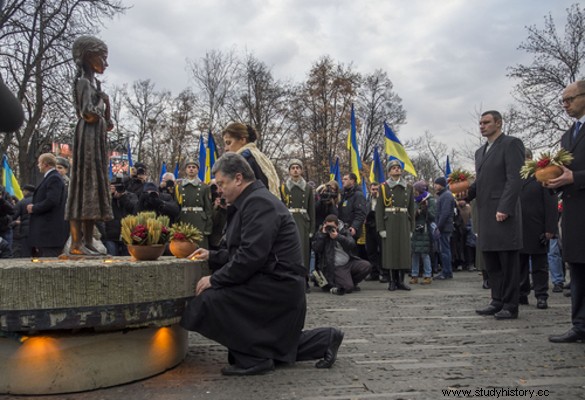
By Me. Cláudio Fernandes
Holodomor is a Ukrainian word that means “to starve”, “to starve”. This word came to be used in the context of Ukrainian history to define the events that led to the death by starvation of millions of Ukrainians between 1931 and 1933. Roughly speaking, the holodomor, like the Nazi holocaust against the Jews, consisted of a genocide against the population of Ukraine undertaken by Soviet communism, which was led by Stalin.
The atrocity of Holodomor dates back to the economic policies that Stalin began to employ as soon as he took power in 1928. One of the measures employed consisted of controlling the production of cereals in the countries of the Soviet Union. through “compulsory requisition”, that is, a bureaucratic device that forced peasants to supply a large part of the surplus produced to the State at low cost. In the following years, the policy of forced collectivization of agricultural properties followed, whose administration came to be completely rationalized by the Soviet State.
Ukraine was the USSR country that most resisted such measures. The Ukrainian cultural autonomy and its strong national identity made it intolerable to the desires of the Russian Soviets. The insurrection of the Ukrainian peasants against the measures of forced collectivization and compulsory requisition of grain forced Stalin to impose measures even more drastic than those carried out in other regions.
Stalin, then, began to trace an anti-Ukrainian campaign with the objective of demonstrating how “harmful” was the posture of that country in relation to communist desires. Initially, a systematic humiliation of Ukrainian intellectuals began, who were subjected to vexing judgments and various ridicule. There was also a debellation of possible foci of anti-Soviet organization that could erupt in the long term. After these measures, Stalin proceeded to attack the peasantry itself.
From 1929 onwards, a strong stipulation of cereal production goals, destined for the Soviet central power, began to be demanded of the peasants of Ukraine. The rigidity was so great that these peasants would only be able to meet the demand if they stopped consuming their share of what was produced, that is, only if they actually went hungry. Everything became government property. Many people were arrested and sentenced to forced labor simply for eating potatoes or harvesting corn on the cob for consumption.
Progressively, death was accentuated in Ukraine. Between 1931 and 1933, the death toll was so great that the corpses were scattered in the streets and fields. The odor of rotting bodies dominated entire regions. Historian Thomas Woods reiterates this fact:
“In 1933, Stalin set a new goal of production and collection, which was to be carried out by a Ukraine that was now on the brink of mass death from starvation. , which had started in March of that year. I will spare the reader the more graphic descriptions of what happened from here. But the corpses were for all sides , and the strong odor of death hung heavily in the air. Cases of insanity, and even cannibalism, are well documented.” (Woods, Thomas. The famine in Ukraine – one of the biggest crimes of the state has been forgotten. Instituto Mises Brasil.)
The death toll in these three years is estimated to have been five million. However, if you take into account the lingering effects of this perverse economic policy and the Ukrainians who were put into forced labor and died there, that number could be more than 14 million.
*Image credits:Shutterstock and IgorGolovniov
